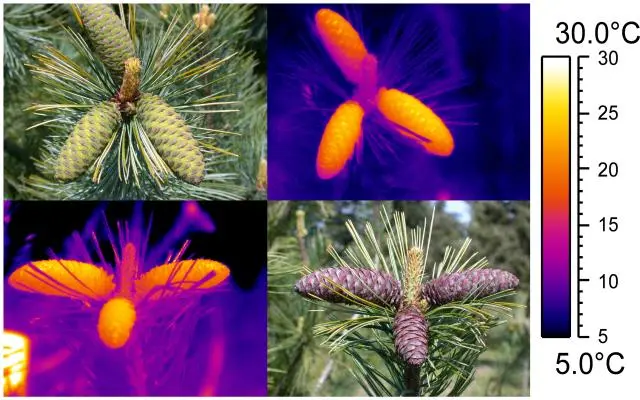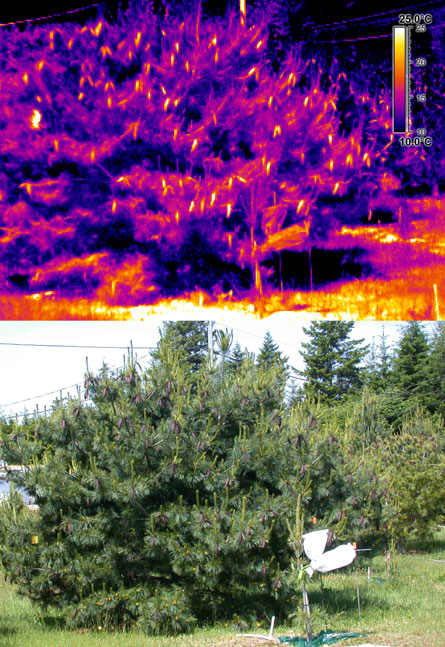- More than 2 years ago
Every day is Christmas for a seed-eating bug with a fondness for pine cones. The insects home in on their dinner thanks to special infrared receptors that detect heat emitted by the conifer cones, scientists are reporting online October 21 in the Proceedings of the Royal Society B.
Infrared detection has been reported in some insects, such as Melanophila beetles that seek out forest fires because their young can only develop in freshly burnt wood. But this report is the first of seed predators specializing in detecting heat emitted by their host plant, says behavioral ecologist Stephen Takács, who led the new study.
The work demonstrates the intricacy of plant-animal interactions, comments behavioral ecologist Irene Terry of the University of Utah in Salt Lake City. When investigating how insects zero in on their host plants, “We tend to focus on things humans can see, can observe easily,” says Terry. “But now we are learning there are many other things that are important in host location.”
Takács, of Simon Fraser University in Burnaby, Canada, and colleagues in British Columbia were investigating the lifestyle of the western conifer seed bug, Leptoglossus occidentalis, and had noticed that the insects turned up in people’s homes when it started to get chilly. The researchers wondered if the bugs were attracted to a house’s heat. Since self-heating has been reported in several plants, such as cycads and skunk cabbage, the research team decided to investigate whether the seed-eaters’ favorite food was emitting heat.
“We went out with the Thermovision camera and we were just stunned,” says Takács. Seen through the infrared camera, the orchard of conifers lit up, as if the trees were decked out with candles. “All we could think of was Christmas,” he says.
The researchers took surface temperature measurements of cones and needles from spring through fall of white pine, lodgepole pine, Engelmann Spruce and Douglas fir. The cones were up to 15 degrees Celsius warmer than the needles, the researchers report. Field and lab experiments demonstrated that the bugs preferred stronger infrared radiation.
It is likely that the cone’s heat is due in part to biophysics — bigger objects collect heat better than smaller objects — and a cone’s surface tends to reflect radiation. But the warmth may also be metabolic, generated during the activity of seed development, says Takács.
Scanning electron microscopy of the bugs’ body surface revealed specialized receptors on abdominal segments that were similar in texture and location to Australian fire beetles’ infrared receptors. When the scientists painted over the receptors with silica paint, which is impermeable to infrared radiation, the bugs no longer responded to a strong infrared cue. And dissections of the insects’ nervous systems revealed a “clear path to the brain” from the receptors says Takács. The associated brain region is not part of the visual system, he says.
The findings suggest that infrared detection by insects may be much more widespread than previously thought, and might be found in many of the blood-feeding insects, which seek prey that emanate heat, says Takács.
Generating heat may convey some benefit to the plant, such as aiding in seed development. The insects are taking advantage of that, says Terry. “There are probably trade-offs going on here, as with most biological systems.”








